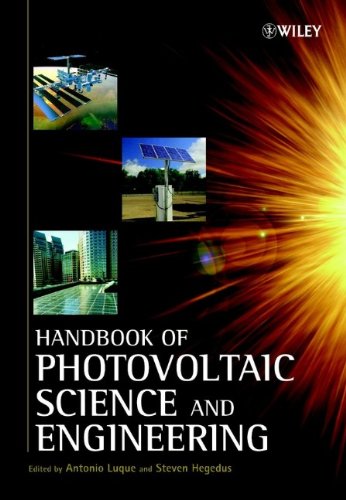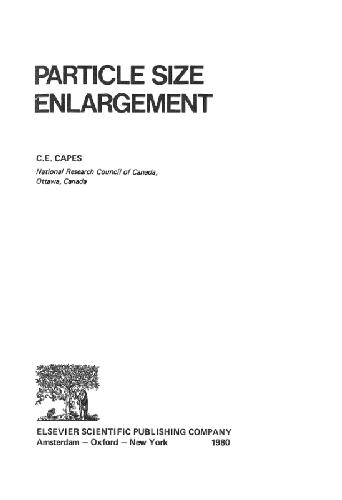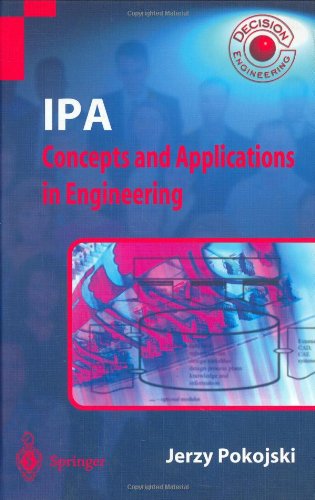Antonio Luque, Steven Hegedus0471491969, 9780471491965
Detailed treatment covers: scientific basis of the photovoltaic effect and solar cell operation the production of solar silicon and of silicon-based solar cells and modules the science and technology of up-and-coming thin film PV technologies how choice of semiconductor materials and their production influence costs and performance high-performance approaches for concentrators and space applications new types of organic dye-based solar cells making measurements on solar cells and modules and how to relate results under standardised test conditions to real outdoor performance photovoltaic system installation and operation of components such as inverters and batteries. architectural applications of building-integrated PV finance and the role of investors: public funding and policy in promoting PV world-wide Each chapter is written to be partially accessible to beginners while providing detailed information of the physics and technology for experts. Encompassing a review of past work and the fundamentals in solar electric science, this outstanding reference provides an invaluable resource to practitioners, consultants, researchers and students in the PV engineering industry.
Table of contents :
Front Matter……Page 1
List of Contributors……Page 4
Table of Contents……Page 0
Table of Contents……Page 9
1.1 The Big Picture……Page 25
1.2 What Is Photovoltaics……Page 27
1.3 Six Myths of Photovoltaics……Page 29
1.4 History of Photovoltaics……Page 35
1.5 PV Costs, Markets and Forecasts……Page 39
1.6 What Are the Goals of Today’s PV Research and Manufacturing?……Page 43
1.7 Global Trends in Performance and Applications……Page 44
1.8 Crystalline Silicon Progress and Challenges……Page 47
1.9 Thin Film Progress and Challenges……Page 51
1.10 Concentration PV Systems……Page 55
1.11 Balance of Systems……Page 56
1.12 Future of Emerging PV Technologies……Page 61
1.13 Conclusions……Page 63
References……Page 65
2.1 Characteristics of Photovoltaic Energy Conversion……Page 68
2.2 A Long-term Substitute for Today’s Conventional Electricity Production – The Ecological Dimension of Photovoltaics……Page 71
2.3 A Technological Basis for Off-grid Electricity Supply – The Development Dimension of Photovoltaics……Page 77
2.4 Power Supply for Industrial Systems and Products – The Professional Low Power Dimension……Page 80
References……Page 83
3.1 Introduction……Page 84
3.2.1 Crystal Structure……Page 87
3.2.2 Energy Band Structure……Page 88
3.2.3 Conduction-band and Valence-band Densities of State……Page 89
3.2.4 Equilibrium Carrier Concentrations……Page 90
3.2.5 Light Absorption……Page 93
3.2.6 Recombination……Page 97
3.2.7 Carrier Transport……Page 101
3.2.8 Semiconductor Equations……Page 104
3.2.9 Minority-carrier Diffusion Equation……Page 105
3.3 PN -Junction Diode Electrostatics……Page 106
3.4.1 Solar Cell Boundary Conditions……Page 110
3.4.4 Terminal Characteristics……Page 112
3.4.5 Solar Cell I –V Characteristics……Page 115
3.4.6 Properties of Efficient Solar Cells……Page 118
3.4.7 Lifetime and Surface Recombination Effects……Page 119
3.4.8 An Analogy for Understanding Solar Cell Operation: A Partial Summary……Page 121
3.5.1 Efficiency and Band Gap……Page 122
3.5.2 Spectral Response……Page 123
3.5.3 Parasitic Resistance Effects……Page 125
3.5.4 Temperature Effects……Page 127
3.5.5 Concentrator Solar Cells……Page 129
3.5.6 High-level Injection……Page 130
3.5.8 Detailed Numerical Modeling……Page 132
3.6 Summary……Page 133
References……Page 134
4.1 Introduction……Page 136
4.2.1 Basic Relationships……Page 137
4.2.3 Local Entropy Production……Page 139
4.2.5 Thermodynamic Functions of Radiation……Page 140
4.2.6 Thermodynamic Functions of Electrons……Page 142
4.3.1 The Balance Equation of a PV Converter……Page 143
4.3.2 The Monochromatic Cell……Page 147
4.3.3 Thermodynamic Consistence of the Shockley–Queisser Photovoltaic Cell……Page 149
4.3.4 Entropy Production in the Whole Shockley-Queisser Solar Cell……Page 152
4.4 The Technical Efficiency Limit for Solar Converters……Page 154
4.5.1 Multijunction Solar Cells……Page 155
4.5.2 Thermophotovoltaic Converters……Page 158
4.5.3 Thermophotonic Converters……Page 159
4.5.4 Higher-than-one Quantum Efficiency Solar Cells……Page 163
4.5.5 Hot Electron Solar Cells……Page 164
4.5.6 Intermediate Band Solar Cell……Page 167
4.6 Conclusions……Page 171
References……Page 172
5.1 Introduction……Page 175
5.2.1 Physical Properties of Silicon Relevant to Photovoltaics……Page 176
5.2.3 Health Factors……Page 178
5.2.4 History and Applications of Silicon……Page 179
5.3.1 The Carbothermic Reduction of Silica……Page 183
5.3.2 Refining……Page 185
5.3.3 Casting and Crushing……Page 188
5.4 Production of Semiconductor Grade Silicon (Polysilicon)……Page 189
5.4.1 The Siemens Process……Page 190
5.4.2 The Union Carbide Process……Page 194
5.4.3 The Ethyl Corporation Process……Page 195
5.5 Current Silicon Feedstock to Solar Cells……Page 197
5.6.1 Solidification……Page 201
5.6.2 Effect of Crystal Imperfections……Page 204
5.6.3 Effect of Various Impurities……Page 208
5.7.1 Crystallisation……Page 215
5.7.2 Upgrading Purity of the Metallurgical Silicon Route……Page 216
5.7.3 Simplification of the Polysilicon Process……Page 220
5.8 Conclusions……Page 223
References……Page 224
6.1 Introduction……Page 227
6.2 Bulk Monocrystalline Material……Page 228
6.2.1 Cz Growth of Single-crystal Silicon……Page 229
6.2.2 Tri-crystalline Silicon……Page 233
6.3.1 Ingot Fabrication……Page 236
6.3.2 Doping……Page 238
6.3.3 Crystal Defects……Page 239
6.3.4 Impurities……Page 241
6.4 Wafering……Page 245
6.4.1 Multi-wire Wafering Technique……Page 246
6.4.2 Microscopic Process of Wafering……Page 248
6.4.3 Wafer Quality and Saw Damage……Page 251
6.5 Silicon Ribbon and Foil Production……Page 252
6.5.1 Process Description……Page 254
6.5.2 Productivity Comparisons……Page 260
6.5.3 Manufacturing Technology……Page 261
6.5.4 Ribbon Material Properties and Solar Cells……Page 262
6.5.5 Ribbon/Foil Technology – Future Directions……Page 265
6.6 Numerical Simulations of Crystal Growth Techniques……Page 266
6.6.2 Thermal Modelling of Silicon Crystallisation Techniques……Page 267
6.6.3 Simulation of Bulk Silicon Crystallisation……Page 269
6.6.4 Simulation of Silicon Ribbon Growth……Page 271
6.7 Conclusions……Page 273
References……Page 274
7.1 Introduction……Page 277
7.2.2 Surfaces……Page 279
7.3.1 Cell Structure……Page 281
7.3.2 Substrate……Page 282
7.3.3 The Front Surface……Page 285
7.3.5 Size Effects……Page 288
7.3.6 Cell Optics……Page 290
7.3.7 Performance Comparison……Page 292
7.4.1 Process Flow……Page 293
7.4.2 Screen-printing Technology……Page 298
7.4.3 Throughput and Yield……Page 301
7.5.1 Thin Wafers……Page 302
7.5.3 Improvements to the Front Emitter……Page 303
7.5.4 Rapid Thermal Processes……Page 304
7.6.2 Passivation with Hydrogen……Page 305
7.6.3 Optical Confinement……Page 307
7.7.2 Heterojunction with Intrinsic Thin Layer……Page 310
7.7.3 Buried Contact Technology……Page 311
7.8.1 Cell Matrix……Page 313
7.8.2 The Layers of the Module……Page 314
7.8.3 Lamination and Curing……Page 315
7.8.5 Special Modules……Page 316
7.9.1 Electrical and Thermal Characteristics……Page 317
7.9.3 Local Shading and Hot Spot Formation……Page 319
7.9.4 Optical Properties……Page 322
7.10.2 Qualification……Page 323
7.11 Conclusions……Page 324
References……Page 325
8.1 Introduction……Page 329
8.2 A Review of Current Thin-film Si Cells……Page 332
8.2.1 Single-crystal Films Using Single-crystal Si Substrates……Page 339
8.2.2 Multicrystalline-Si Substrates……Page 342
8.2.3 Non-Si Substrates……Page 343
8.3 Design Concepts of TF-Si Solar Cells……Page 346
8.3.1 Light-trapping in Thin Si Solar Cells……Page 348
8.3.2 Description of PV Optics……Page 349
8.3.3 Electronic Modeling……Page 355
8.3.4 Methods of Making Thin-Si Films for Solar Cells……Page 363
8.3.5 Methods of Grain Enhancement of a-Si/µc-Si Thin Films……Page 365
8.3.6 Processing Considerations for TF-Si Solar Cell Fabrication……Page 372
8.4 Conclusion……Page 375
References……Page 376
9.1 Introduction……Page 380
9.3.1 Wavelength Dependence of Photon Conversion Efficiency……Page 384
9.3.3 Spectrum Splitting……Page 385
9.4.1 Four-terminal……Page 386
9.5.1 Overview……Page 387
9.5.2 Top and Bottom Subcell QE and JSC……Page 388
9.5.3 Multijunction J –V Curves……Page 389
9.5.4 Efficiency versus Band Gap……Page 391
9.5.5 Top-cell Thinning……Page 393
9.5.6 Current-matching Effect on Fill Factor and VOC……Page 394
9.5.7 Spectral Effects……Page 395
9.5.8 AR Coating Effects……Page 396
9.5.9 Concentration……Page 397
9.5.10 Temperature Dependence……Page 401
9.6.2 MOCVD……Page 403
9.6.3 GaInP Solar Cells……Page 404
9.6.4 GaAs Cells……Page 414
9.6.5 Ge Cells……Page 415
9.6.6 Tunnel-junction Interconnects……Page 417
9.6.7 Chemical Etchants……Page 418
9.7.1 Characterization of Epilayers……Page 419
9.7.3 I -V Measurements of Multijunction Cells……Page 421
9.7.5 Device Diagnosis……Page 422
9.8.1 Refinements to the GaInP/GaAs/Ge Cell……Page 424
9.8.2 Mechanical Stacks……Page 425
9.8.3 Growth on Other Substrates……Page 426
9.9.2 Concentrator Systems……Page 427
References……Page 428
10.1.1 Vanguard I to Deep Space I……Page 433
10.2 The Challenge for Space Solar Cells……Page 436
10.2.1 The Space Environment……Page 437
10.2.2 Thermal Environment……Page 440
10.2.3 Solar Cell Calibration and Measurement……Page 444
10.3 Silicon Solar Cells……Page 445
10.4 III-V Solar Cells……Page 446
10.4.1 Thin-Film Solar Cells……Page 448
10.5 Space Solar Arrays……Page 451
10.5.2 Rigid Panel Planar Arrays……Page 452
10.5.3 Flexible Fold-Out Arrays……Page 453
10.5.4 Thin-Film or Flexible Roll-Out Arrays……Page 455
10.5.5 Concentrating Arrays……Page 456
10.5.6 High-Temperature/Intensity Arrays……Page 458
10.5.7 Electrostatically Clean Arrays……Page 459
10.5.8 Mars Solar Arrays……Page 460
10.6.1 Low Intensity Low Temperature ( LILT) Cells……Page 461
10.6.3 Integrated Power Systems……Page 462
10.6.5 High-Radiation Environment Solar Arrays……Page 463
10.7 Power System Figures of Merit……Page 464
References……Page 466
11.1 Introduction……Page 469
11.1.1 The Concentrator Dilemma……Page 470
11.2.1 Types of Optics……Page 472
11.2.2 Concentration Ratio……Page 475
11.2.4 Static Concentrators……Page 476
11.3 Historical Overview……Page 480
11.3.1 The Sandia National Laboratories Concentrator Program (1976 to 1993)……Page 481
11.3.2 The Martin Marietta Point-focus Fresnel System……Page 482
11.3.3 The Entech Linear-focus Fresnel System……Page 483
11.3.5 The Concentrator Initiative……Page 485
11.3.6 Early Demonstration Projects……Page 486
11.3.7 The EPRI High-concentration Program……Page 487
11.3.8 Other Concentrator Programs……Page 491
11.3.9 History of Performance Improvements……Page 492
11.4.1 Basics……Page 494
11.4.2 Reflection and Refraction……Page 498
11.4.3 The Parabolic Concentrator……Page 499
11.4.4 The Compound Parabolic Concentrator……Page 502
11.4.5 The V-trough Concentrator……Page 503
11.4.6 Refractive Lenses……Page 505
11.4.7 Secondary Optics……Page 509
11.4.8 Static Concentrators……Page 511
11.4.9 Innovative Concentrators……Page 512
11.4.10 Issues in Concentrator Optics……Page 514
11.5 Current Concentrator Activities……Page 515
11.5.3 BP Solar and the Polytechnical University of Madrid……Page 516
11.5.5 Fraunhofer-Institut fur Solare Energiesysteme……Page 517
11.5.8 Polytechnical University of Madrid……Page 518
11.5.11 SunPower Corporation……Page 519
References……Page 520
12.1.1 Amorphous Silicon: The First Bipolar Amorphous Semiconductor……Page 524
12.1.2 Designs for Amorphous Silicon Solar Cells: A Guided Tour……Page 527
12.1.3 Staebler–Wronski Effect……Page 530
12.1.4 Synopsis of this Chapter……Page 531
12.2.1 Atomic Structure……Page 532
12.2.2 Defects and Metastability……Page 533
12.2.3 Electronic Density-of-states……Page 534
12.2.4 Bandtails, Bandedges, and Band Gaps……Page 535
12.2.5 Defects and Gap States……Page 536
12.2.7 Alloying and Optical Properties……Page 537
12.3.1 Survey of Deposition Techniques……Page 539
12.3.2 RF Glow Discharge Deposition……Page 540
12.3.3 Glow Discharge Deposition at Different Frequencies……Page 542
12.3.4 Hot-wire Chemical Vapor Deposition……Page 544
12.3.6 Hydrogen Dilution……Page 545
12.4.1 Electronic Structure of a pin Device……Page 547
12.4.2 Photocarrier Drift in Absorber Layers……Page 549
12.4.3 Absorber Layer Design of a pin Solar Cell……Page 552
12.4.4 The Open-circuit Voltage……Page 553
12.4.5 Optical Design of a-Si:H Solar Cells……Page 556
12.4.6 Cells under Solar Illumination……Page 559
12.4.7 Light-soaking Effects……Page 560
12.5.1 Advantages of Multiple-junction Solar Cells……Page 561
12.5.2 Using Alloys for Cells with Different Band Gaps……Page 563
12.5.3 a-Si/a-SiGe Tandem and a-Si/a-SiGe/a-SiGe Triple-junction Solar Cells……Page 565
12.5.4 Microcrystalline Silicon Solar Cells……Page 570
12.5.5 Micromorph and Other µc-Si-based Multijunction Cells……Page 571
12.6.1 Continuous Roll-to-roll Manufacturing on Stainless Steel Substrates……Page 572
12.6.2 a-Si Module Production on Glass Superstrate……Page 574
12.6.3 Manufacturing Cost, Safety, and Other Issues……Page 575
12.6.4 Module Performance……Page 576
12.7.1 Status and Competitiveness of a-Si Photovoltaics……Page 577
12.8 Acknowledgments……Page 578
References……Page 579
13.1 Introduction……Page 585
13.2 Material Properties……Page 588
13.2.1 Structure and Composition……Page 589
13.2.3 Electrical Properties……Page 592
13.2.4 The Surface and Grain Boundaries……Page 594
13.3 Deposition Methods……Page 596
13.3.1 Substrates……Page 597
13.3.3 Coevaporation of Cu( InGa)Se2……Page 598
13.3.4 Two-Step Processes……Page 601
13.4 Junction and Device Formation……Page 602
13.4.1 Chemical Bath Deposition……Page 603
13.4.2 Interface Effects……Page 604
13.4.3 Other Deposition Methods……Page 605
13.4.4 Alternative Buffer Layers……Page 606
13.4.5 Transparent Contacts……Page 608
13.4.6 Buffer Layers……Page 609
13.5 Device Operation……Page 610
13.5.1 Light- Generated Current……Page 611
13.5.2 Recombination……Page 613
13.5.3 The Cu(InGa)Se2/ Cds Interface……Page 617
13.5.4 Wide and Graded Band Gap Devices……Page 618
13.6.1 Processes and Equipment……Page 620
13.6.3 Module Performance……Page 622
13.6.4 Production Costs……Page 625
13.6.5 Environmental Concerns……Page 626
13.7 The Cu(InGa) Se2 Outlook……Page 627
References……Page 629
14.1 Introduction……Page 635
14.2 CdTe Properties and Thin-Film Fabrication Methods……Page 639
14.2.1 Condensation/Reaction Of Cd And Te2 Vapors on a Surface……Page 646
14.2.2 Galvanic Reduction of Cd and Te Ions at a Surface……Page 647
14.2.3 Precursor Reaction at a Surface……Page 648
14.3.1 Window Layers……Page 649
14.3.2 Cdte Absorber Layer and CdCl2 Treatment……Page 651
14.3.3 Cds/CdTe Intermixing……Page 655
14.3.4 Back Contact……Page 660
14.3.5 Solar Cell Characterization……Page 662
14.3.6 Summary Of CdTe-Cell Status……Page 668
14.4 CdTe Modules……Page 669
14.5 The Future Of CdTe-Based Solar Cells……Page 671
References……Page 675
15.1.1 Background……Page 681
15.1.2 Structure and Materials……Page 682
15.1.3 Mechanism……Page 688
15.1.4 Charge- Transfer Kinetics……Page 691
15.2.1 Preparation of TiO2 Colloid……Page 696
15.2.2 Preparation of the TiO2 Electrode……Page 697
15.2.3 Dye Fixation onto the TiO2 Film……Page 698
15.2.6 Assembling the Cell and Cell Performance……Page 699
15.3 New Developments……Page 700
15.3.2 New Dye Photosensitizers……Page 701
15.3.3 New Electrolytes……Page 706
15.3.4 Quasi-Solid-State And Solid-State DSSCs……Page 707
15.4.1 Stability of the DSSC……Page 709
15.4.2 Module Fabrication and Other Subjects for Commercialization……Page 712
15.5 Summary and Prospects……Page 713
References……Page 714
16.2 Rating PV Performance……Page 719
16.2.1 Standard Reporting Conditions……Page 720
16.2.2 Alternative Peak Power Ratings……Page 733
16.2.3 Energy-Based Performance Rating Methods……Page 734
16.2.4 Translation Equations to Reference Conditions……Page 737
16.3.1 Measurement of Irradiance……Page 739
16.3.2 Simulator-Based I-V Measurements: Theory……Page 740
16.3.3 Primary Reference Cell Calibration Methods……Page 741
16.3.4 Uncertainty Estimates in Reference Cell Calibration Procedures……Page 744
16.3.5 Intercomparison of Reference Cell Calibration Procedures……Page 745
16.3.6 Multijunction Cell Measurement Procedures……Page 746
16.3.7 Cell and Module I – V Systems……Page 749
16.3.8 Solar Simulators……Page 754
16.4 Spectral Responsivity Measurements……Page 756
16.4.1 Filter-Based Systems……Page 757
16.4.2 Grating-Based Systems……Page 759
16.4.3 Spectral Responsivity Measurement Uncertainty……Page 760
16.5 Module Qualification And Certification……Page 763
Acknowledgements……Page 764
References……Page 765
17.1 Introduction to Pv Systems and Various Forms of Application……Page 771
17.2.1 Grid-Independent Photovoltaic Systems for Small Devices and Appliances……Page 773
17.2.2 Photovoltaic Systems for Remote Consumers of Medium And Large Size……Page 779
17.2.3 Decentralised Grid-Connected Photovoltaic Systems……Page 792
17.2.4 Central Grid-Connected Photovoltaic Systems……Page 797
17.2.5 Space Application……Page 798
17.3.1 Battery Storage……Page 802
17.3.2 Charge Controller……Page 805
17.3.3 Inverters……Page 806
17.3.4 Auxiliary Generators……Page 808
17.3.5 System Sizing……Page 809
17.3.6 Energy-Saving Domestic Appliances……Page 811
17.4.1 Future Developments in Off-Grid Power Supply with Photovoltaics……Page 812
17.4.2 Future Developments in Grid-Connected Photovoltaic Systems……Page 814
References……Page 815
18.1 Introduction……Page 817
18.2.1 Fundamentals of Electrochemical Cells^1……Page 819
18.2.2 Batteries with Internal and External Storage……Page 825
18.2.3 Commonly Used Technical Terms and Definitions……Page 827
18.2.4 Definitions of Capacity and State of Charge……Page 829
18.3.1 An Example of an Energy Flow Analysis……Page 830
18.3.2 Classification of Battery-Operating Conditions in PV Systems……Page 831
18.4.1 Overview……Page 835
18.4.2 NiCd Batteries……Page 836
18.4.3 Nickel-Metal Hydride ( NiMH) Batteries……Page 839
18.4.5 Lithium-Ion and Lithium-Polymer Batteries……Page 840
18.4.6 Double-Layer Capacitors……Page 842
18.4.7 The Lead Acid Battery……Page 844
18.5 Secondary Electrochemical Battery Systems with External Storage……Page 867
18.5.1 Redox-Flow Batteries……Page 868
18.5.2 Hydrogen/Oxygen Storage Systems……Page 870
18.6 Investment and Lifetime Cost Considerations……Page 875
18.7 Conclusion……Page 877
References……Page 878
19. Power Conditioning For Photovoltaic Power Systems……Page 881
19.1.1 Charge Controllers……Page 882
19.1.2 Charge Equaliser for Long Battery Strings……Page 895
19.2.2 Inverters for Grid-Connected Systems……Page 899
19.2.3 Inverters for Stand-Alone Operation……Page 901
19.2.4 Inverter Principles……Page 902
19.2.5 Power Quality of Inverters……Page 914
19.2.7 Safety Aspects with Grid-Connected Inverters……Page 918
References……Page 920
20.1 Introduction……Page 922
20.2 Movement Between Sun and Earth……Page 923
20.3 Solar Radiation Components……Page 929
20.4 Solar Radiation Data and Uncertainty……Page 932
20.5.1 Estimation of the Direct and Diffuse Components of Horizontal Radiation, Given the Global Radiation……Page 937
20.5.2 Estimation of the Hourly Irradiation from the Daily Irradiation……Page 942
20.5.3 Estimation of the Radiation on Surfaces on Arbitrary Orientation, Given the Components Falling on a Horizontal Surface……Page 944
20.6 Diurnal Variations of the Ambient Temperature……Page 950
20.7 Effects of the Angle of Incidence and of the Dirt……Page 951
20.8.2 The Reference Year……Page 954
20.8.3 Shadows and Trajectory Maps……Page 956
20.9 Irradiation on Most Widely Studied Surfaces……Page 957
20.9.1 Fixed Surfaces……Page 960
20.9.2 Sun-Tracking Surfaces……Page 962
20.9.3 Concentrators……Page 963
20.10 PV Generator Behaviour Under Real Operation Conditions……Page 964
20.10.1 The Selected Methodology……Page 966
20.10.2 Second-Order Effects……Page 970
20.11 Reliability and Sizing of Stand-Alone PV Systems……Page 973
20.12 The Case of Solar Home Systems……Page 979
20.13 Energy Yield of Grid-Connected PV Systems……Page 982
20.14 Conclusions……Page 983
References……Page 984
21. Economic Analysis and Environmental Aspects of Photovoltaic Systems……Page 988
21.1 Background……Page 989
21.2.1 Key Concepts……Page 990
21.2.2 General Methodology……Page 997
21.2.3 Case Studies……Page 1001
21.3 Energy Payback and Air Pollution Reduction……Page 1014
21.4 Prospects for the Future……Page 1016
References……Page 1020
22.1.1 Photovoltaics (PV) as a Challenge for Architects and Engineers……Page 1021
22.1.2 Definition of Building Integration……Page 1022
22.2.1 Architectural Functions of PV Modules……Page 1024
22.2.3 PV Integrated as Roofing Louvres, Facades and Shading……Page 1027
22.2.4 Well-Integrated Systems……Page 1030
22.2.5 Integration of PV Modules in Architecture……Page 1035
22.2.6 Brundtland Centre, Toftlund (Dk) – A Case Study……Page 1038
22.3.1 Categories and Type of Buildings……Page 1042
22.3.2 Cells and Modules……Page 1045
22.4.1 Urban Aspects……Page 1052
22.4.2 Practical Rules for Integration……Page 1053
22.4.3 Step-by-Step Design……Page 1054
22.4.4 Design Process: Strategic Planning……Page 1055
22.5 Conclusions……Page 1056
References……Page 1057
Further Reading……Page 1058
23.1.1 Energy and the Early Man……Page 1059
23.1.3 One Third of Humanity Still in Darkness……Page 1060
23.1.5 Rural Electrification……Page 1061
23.2.1 Electricity Applications in the Rural Setting……Page 1062
23.2.2 Basic Sources of Electricity……Page 1063
23.3 The PV Alternative……Page 1064
23.3.1 PV Systems for Rural Applications……Page 1065
23.3.2 Barriers to PV Implementation……Page 1067
23.3.3 Technical Barriers……Page 1068
23.3.4 Nontechnical Issues……Page 1071
23.3.5 Trained Human Resources……Page 1075
23.4.2 Bolivia……Page 1077
23.4.3 Brazil……Page 1079
23.4.4 Mexico……Page 1080
23.4.5 Sri Lanka……Page 1081
23.4.6 Water Pumping in the Sahel……Page 1083
23.5 Toward a New Paradigm for Rural Electrification……Page 1084
References……Page 1085
24.1 Historical Development of PV Financing……Page 1088
24.2.2 Growth Outlook……Page 1090
24.2.3 Capital Requirements……Page 1091
24.3 Financial Characteristics of PV……Page 1092
24.4.1 Impact of Loan Terms on End-User Cost……Page 1094
24.4.2 Types of Residential Financing……Page 1095
24.4.4 Borrowers’ Experience……Page 1096
24.4.6 Improving the Financing of Residential PV……Page 1097
24.5.1 Rural Applications……Page 1098
24.5.2 Impact of Financing on Market Demand……Page 1099
24.5.3 Examples of PV Financing in Rural Areas……Page 1100
24.6.1 International Aid and Donor Funding……Page 1101
24.6.2 United Nations……Page 1102
24.6.3 World Bank Solar Home System Projects……Page 1103
24.6.5 Global Environment Facility……Page 1104
24.7 Financing the PV Industry……Page 1106
24.8.1 Potential Impact of Financing as a Government Policy Option……Page 1107
24.8.2 Direct Subsidies (“Buy-Downs”)……Page 1109
24.8.3 Soft Loans (Interest Subsidies)……Page 1110
24.9.1 PV Programs in the United States……Page 1111
24.9.3 PV Programs in Europe……Page 1112
24.9.5 Sources of R&D Funding……Page 1114
Environmental Enterprises Assistance Fund (EEAF)……Page 1115
Renewable Energy and Energy Efficiency Fund (REEF)……Page 1116
Solar Development Foundation (SDF)……Page 1117
UNDP Sustainable Energy & Environment Division (SEED)……Page 1118
ASN Bank……Page 1119
European Bank for Reconstruction and Development……Page 1120
IFU……Page 1121
Rabobank Nederland/Groen Management BV……Page 1122
Commons Capital LP……Page 1123
Heller Financial Incorporated……Page 1124
Sam Equity Partners Ltd……Page 1125
DFCC Bank (Sri Lanka)……Page 1126
Malaprabha Grameena Bank (India)……Page 1127
Winrock International India……Page 1128
References……Page 1129
A……Page 1131
B……Page 1133
C……Page 1135
D……Page 1142
E……Page 1145
F……Page 1149
G……Page 1150
H……Page 1152
I……Page 1154
L……Page 1156
M……Page 1157
O……Page 1160
P……Page 1161
R……Page 1165
S……Page 1167
T……Page 1175
W……Page 1178
Z……Page 1179







Reviews
There are no reviews yet.